Semantic Overview: What / Why / How / Considerations
Table of Contents
Toggle- Semantic Overview: What / Why / How / Considerations
- Quick answer
- The main beige stone types and what makes them beige
- Geological differences: marble vs limestone vs travertine vs sandstone
- Is sandstone the same as beige? (short, direct)
- What color is “stone beige”? — perception & design
- How to specify and buy beige natural stone (manufacturers/factories/wholesale)
- Regulations & worker safety — why this is part of procurement now
- Care & maintenance differences for beige stone types
- Trends & market insights (short)
- FAQ — Google hot search (5 Q/A; the plain text below will be embedded unchanged in the JSON-LD that follows)
- SEO
What: “Beige natural stone” covers several rock types—marble, limestone, travertine, and sandstone—that naturally present warm cream, tan, or light-brown colors.
Why it matters: Beige stones are a neutral design staple (timeless, warm), but their geological differences change their performance (hardness, porosity, maintenance) and regulatory obligations during fabrication (silica exposure).
How to choose: Match the stone’s mineralogy and porosity to the intended use (floor, wall, countertop), request TDS for absorption and flexural strength, verify quarry origin, and confirm factory-level silica-control measures where slabs are cut or fabricated.
Considerations: For wholesale or manufacturer relationships, insist on lot-matching photos, supply-chain provenance, and documentation that the factory complies with occupational silica rules (OSHA/EU guidance) and EN stone-denomination standards for clear labeling.
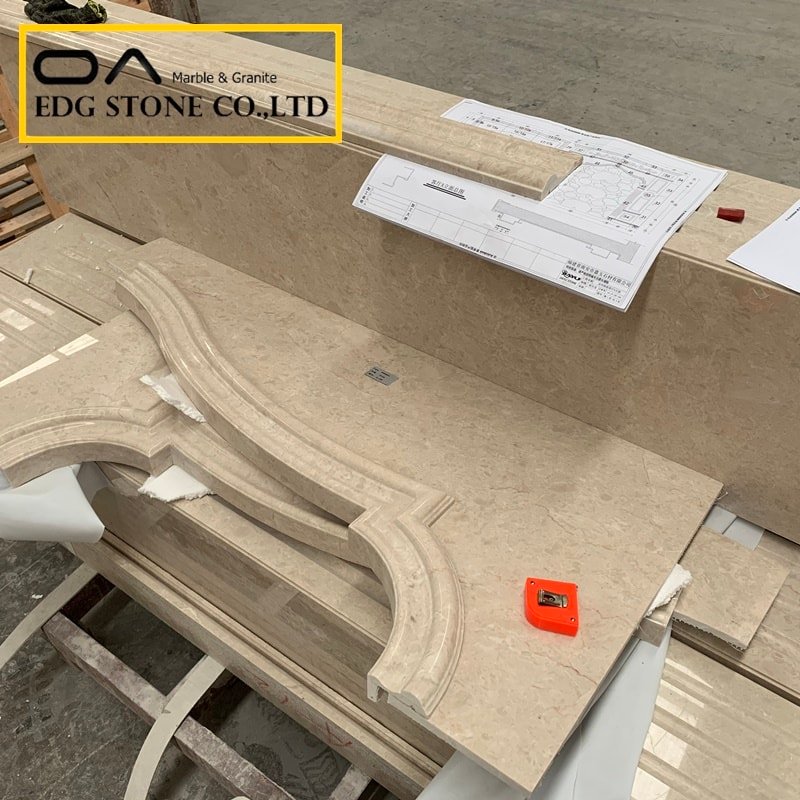
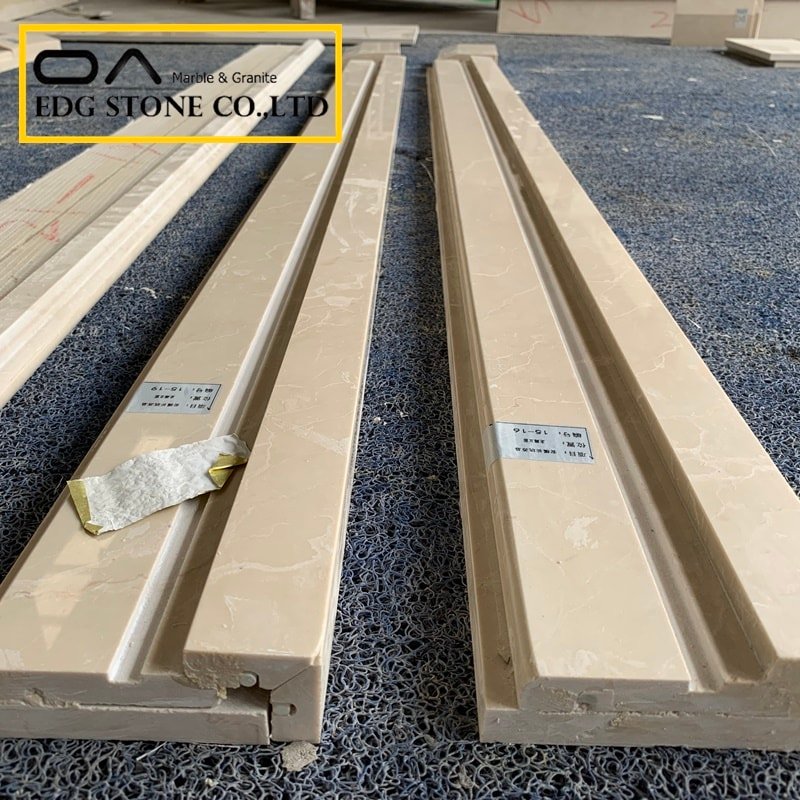
Quick answer
Beige natural stone is a color category spanning multiple rock types. Depending on your needs, “beige stone” can refer to Crema Marfil and other light marbles, Botticino, travertine (beige varieties), light limestones, and sandstones that present warm tan/cream hues. Each has different origins, physical properties, and maintenance demands.
The main beige stone types and what makes them beige
Below are the common natural stones you’ll see marketed or specified as “beige,” with short notes on why they look beige (mineral cause) and typical uses.
Crema Marfil (Spanish limestone/marble family)
Overview: Crema Marfil is one of the most internationally recognized “beige” stones — creamy, warm, and often with soft veining. It’s quarried chiefly in the Alicante region of Spain (Monte Coto area).
Why beige? Iron and organic mineral traces within calcite/limestone produce warm cream tones.
Uses: Flooring, wall cladding, bathrooms; widely used in commercial and residential projects.
Botticino (Italian beige marble)
Overview: Botticino is a classic Italian beige marble with subtle linear or clouded veining; prized in higher-end interiors.
Uses: Elegant flooring, facades, and decorative surfaces.
Travertine (beige varieties)
Overview: Travertine is a form of limestone formed in hot springs; it commonly appears in beige, cream, and tan and is often characterized by natural pits and pores.
Uses: Flooring, patios, pool surrounds, interior walls.
Limestone (light/beige limestones)
Overview: True limestone—sedimentary rock made largely of calcite from shells and microfossils—often occurs in beige shades. Light limestones can be honed and used where a soft, matte natural look is required.
Sandstone (many beige tones)
Overview: Sandstone is a clastic (sediment-derived) stone made of sand grains; many sandstones are naturally beige because of quartz and iron oxide cements. Texture tends to be more granular and earthy. Sandstone can overlap visually with limestone when calcium-cemented.
Other/beige marbles and variants
Perlato, Noce, and country-specific beige marbles (Turkey, Egypt, China) are often marketed under trade names and can be economical alternatives to origins like Spain or Italy.
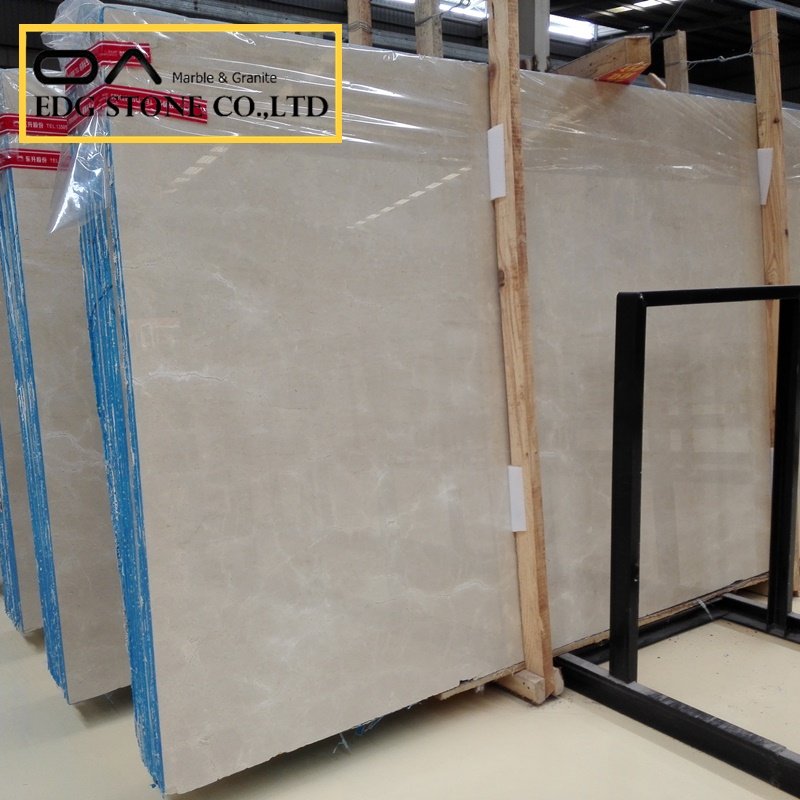
Geological differences: marble vs limestone vs travertine vs sandstone
Understanding geology helps match stone to a use case:
Marble: Metamorphosed limestone — recrystallized calcite yields interlocking crystals, polished finish, softer than many igneous stones. (Use where elegance matters; avoid heavy acidic exposure.)
Limestone: Sedimentary, often formed from biological debris; less crystalline than marble, typically mildly porous, good for walls and floors with careful sealing.
Travertine: A porous form of limestone deposited around mineral springs; distinctive pitted texture; dense when filled and honed.
Sandstone: Cemented sand grains, often quartz-dominant; mechanically durable in many forms, but texture and porosity vary widely. Some sandstones are calcium-cemented and resemble limestones.
Is sandstone the same as beige? (short, direct)
No — sandstone is a rock type (sedimentary), not a color. Many sandstones are beige, but not all. Likewise, many other rocks (limestone, travertine, marble) can also be beige. Always specify both material and color when procuring (e.g., “beige sandstone — Medina sandstone” or “Crema Marfil limestone/marble”).
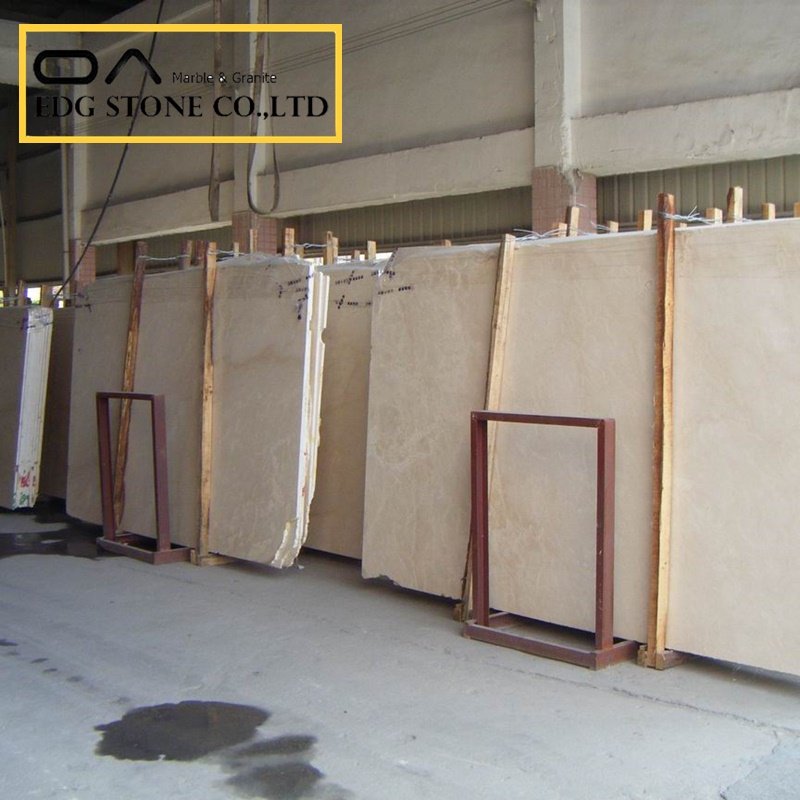
What color is “stone beige”? — perception & design
“Stone beige” describes a color range: from pale cream and ivory to warm tan and light brown. In design terms, beige is intentionally neutral: it pairs easily with cool and warm palettes and reads as natural and calming in interiors. Natural stones display variation: veins, fossil pockets, or grain. For digital and print specifications, designers sometimes provide a Pantone ora sample slab photo to avoid ambiguity.
How to specify and buy beige natural stone (manufacturers/factories/wholesale)
For architects, specifiers, and procurement teams — and especially for wholesale/manufacturer relationships — follow this practical workflow:
Define functional needs: floor, countertop, exterior cladding — these affect required strength, slip resistance, and porosity.
Ask for quarry & lot details: obtain the quarry name and photos of the slab lot to confirm visual consistency. EN 12440 recommends a clear denomination of natural stone in trade to reduce confusion.
Request TDS (Technical Data Sheet): water absorption, density, flexural strength, Mohs hardness, and recommended finishes.
Confirm fabrication & safety documentation: if factory/fabrication is included, request evidence of wet cutting, local exhaust ventilation, and worker training — especially relevant for silica-containing stones. 職業安全健康管理局+1
Get samples or small tiles: test for staining and matching under your project’s lighting conditions.
Negotiate lot matching for large orders: specify that the supplier must deliver slabs from the same lot or provide pre-approved balancing slabs.
Regulations & worker safety — why this is part of procurement now
Cutting, grinding, and polishing natural stone can generate respirable crystalline silica (RCS); regulators worldwide have tightened exposure limits and guidance:
U.S. OSHA: enforces a PEL of 50 µg/m³ (0.05 mg/m³) as an 8-hour TWA for respirable crystalline silica in general industry and construction standards, and mandates exposure assessment and controls in fabrication shops. 職業安全健康管理局+1
European framework: EU directives and member-state laws set occupational limits and guidance (e.g., CMD guidance and limit-value frameworks around 0.1 mg/m³ in some directives), and various national implementations may be stricter. Compliance with worker-safety requirements is increasingly demanded by responsible buyers. 歐盟職業安全與健康局+1
Implication for buyers & factories: insist on documented control measures (wet cutting, LEV, respiratory protection ,and medical surveillance) and include compliance clauses in wholesale/factory contracts. Non-compliant factories expose buyers to reputational and contractual risk.
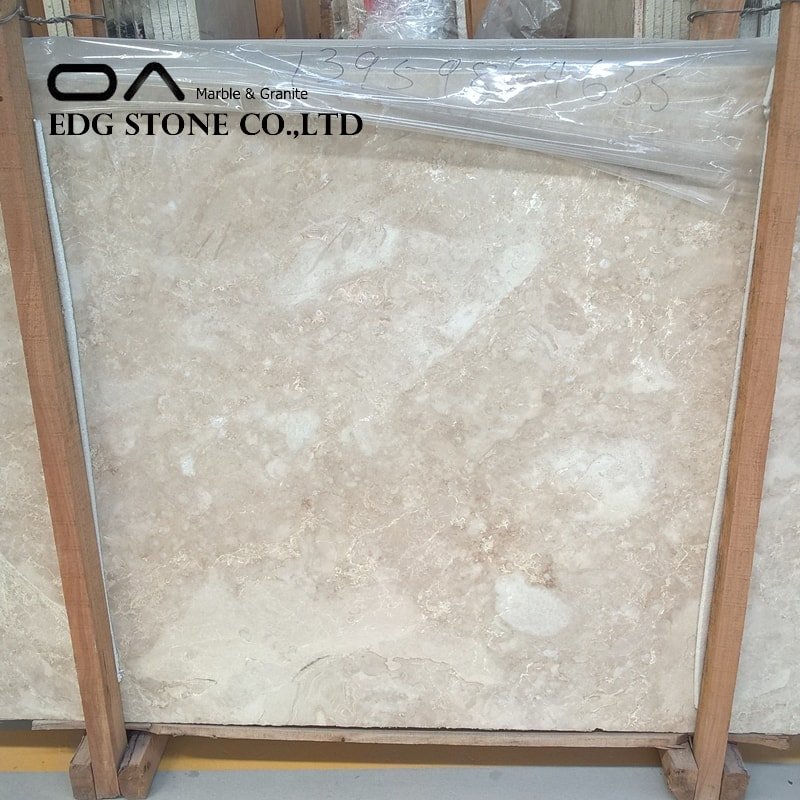
Care & maintenance differences for beige stone types
Marble (beige variants): polish, seal; avoid acids; common in bathrooms and decorative walls.
Limestone: seal regularly, clean with pH-neutral products; better for low-impact floors and interior walls.
Travertine: often filled and sealed; periodic re-sealing recommended.
Sandstone: variable; many need sealing and protection from freeze/thaw in exterior use.
Trends & market insights (short)
Neutral palettes and natural materials remain strong in hospitality and residential design; beige stones are widely favored because they fit many styles and are supplier-friendly. However, buyer demands now include not only aesthetic and price considerations but provenance, working conditions, and documentation — especially after rising attention on silica-related occupational illness in stone fabrication sectors.
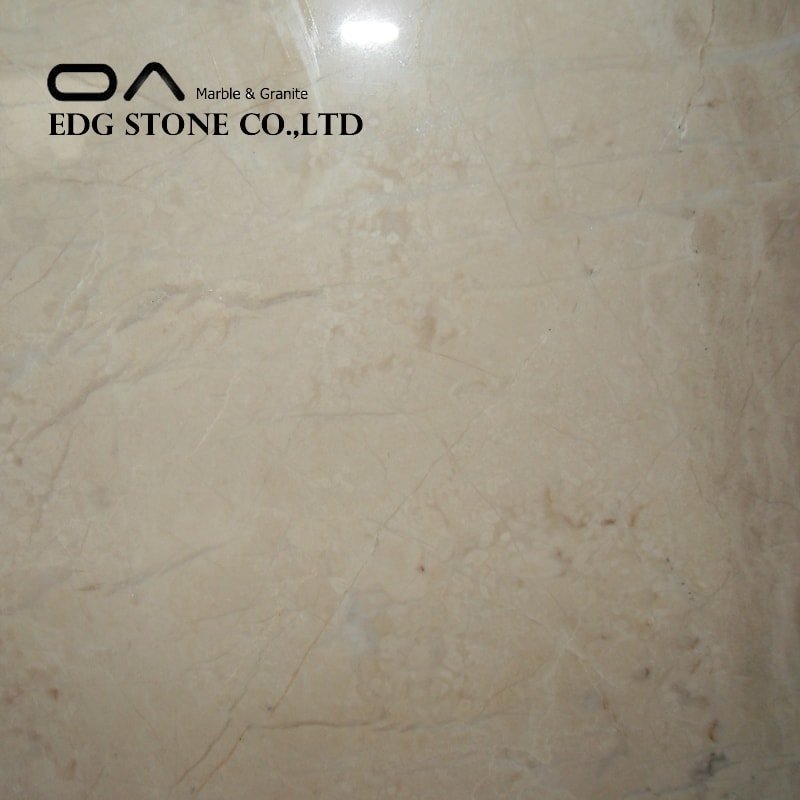
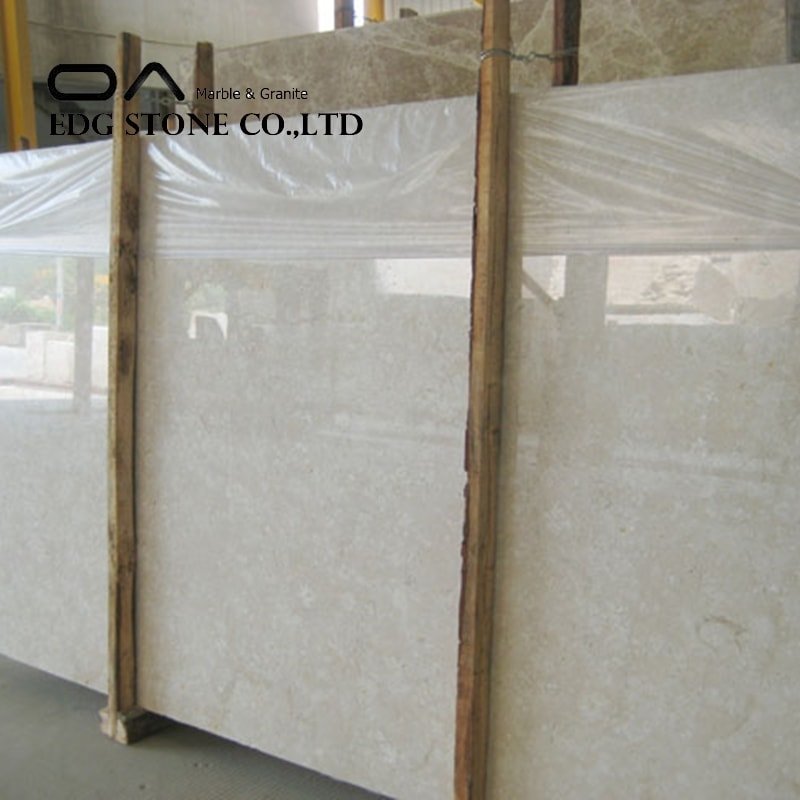
Material: Crema Marfil (commercial name) — Monte Coto quarry, Alicante, Spain.
Finish: Honed/polished (specify).
Thickness: 20 mm slabs.
TDS required: porosity (absorption %), density, flexural strength (MPa), Mohs hardness, recommended sealant, and maintenance.
Factory requirements: Evidence of wet cutting and LEV; silica exposure control plan; photos of slab lot and slab numbers for lot matching; warranty 12 months.
Delivery: FOB factory; include crate and pallet protection details.
FAQ — Google hot search (5 Q/A; the plain text below will be embedded unchanged in the JSON-LD that follows)
Q: What is a beige stone?
A: A beige stone is any natural rock that displays cream, tan, or light-brown tones — common examples include Crema Marfil (Spanish limestone/marble), Botticino (Italian marble), beige travertine, certain limestone, and many sandstones.Q: What color is stone beige?
A: Stone beige ranges from pale cream/ivory to warm tan and light brown; natural stones will show variations in veins, fossil traces, or granular texture depending on their geology.Q: What is beige in nature?
A: In nature, beige appears in sand, soilwood od, and many sedimentary rocks where iron oxides or organic minerals impart warm tones — it is a neutral, earthy color widely used in design.Q: What does beige limestone look like?
A: Beige limestone typically has a soft, matte appearance with subtle mottling or fossil fragments; it polishes to an arm natural finish and is commonly used for flooring and light-clad walls.Q: Is sandstone the same as beige?
A: No. Sandstone is a rock type (cemented sand grains) that is often beige, but “beige” is a color descriptor — sandstone can be beige, red, brown, or gray depending on its composition and cement.
SEO
50 SEO tags:
natural stone beige, what is a beige stone, beige stone types, Crema Marfil beige, Botticino marble beige, beige travertine, beige limestone, beige sandstone, what color is stone beige, buy beige stone wholesale, beige stone manufacturer, beige stone factory, beige stone slabs, beige stone countertops, beige stone tiles, beige stone suppliers, beige stone quarry, Crema Marfil quarry Spain, beige stone TDS, stone lot matching wholesale, beige limestone supplier, travertine wholesale manufacturer, sandstone beige manufacturer, porcelain beige alternative, sintered beige slabs, beige marble wholesale, beige natural stone export, EN 12440 stone denomination, silica controls stone fabrication, OSHA silica stone industry, limestone vs sandstone, travertine vs marble, color beige in nature, beige interior trends 2025, beige bathroom stone, beige kitchen countertop stone, beige exterior cladding stone, beige floor natural stone, best beige stone for countertop, how to seal beige stone, beige stone maintenance guide, beige stone procurement checklist, buy crema marfil factory, crema marfil manufacturer Spain, beige stone authenticity, beige stone certification, beige stone sample request, beige stone price range, beige stone sustainability, beige stone neutral palette.
